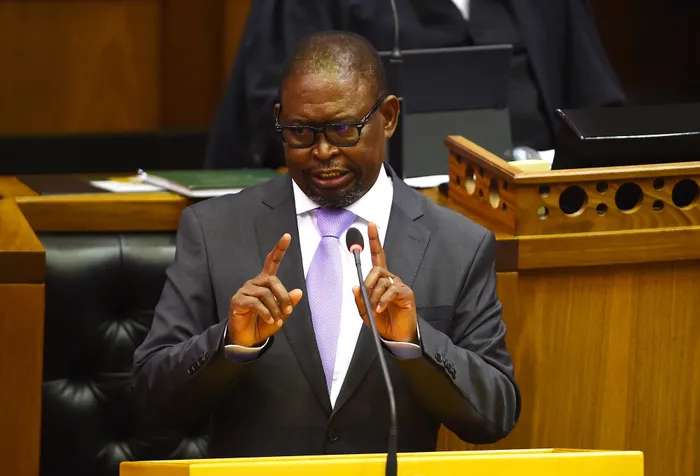SA’s economic outlook brightens ahead of MTBPS as growth projections improve

Finance Minister Enoch Godongwana will next week report on the government’s efforts to meet revenue targets and navigate mounting debt obligations. Picture: Phando Jikelo Independent Newspapers
As South Africa gears up for the upcoming Medium Term Budget Policy Statement (MTBPS), the nation’s economic growth prospects and public finances are poised for a more positive outlook, bolstered by stabilising political and energy conditions.
Finance Minister Enoch Godongwana will next week report on the government’s efforts to meet revenue targets and navigate mounting debt obligations, a necessary dialogue amid a landscape of renewed business and investor confidence.
Godongwana has also said that cost-cutting measures were planned, and a lowering of the planned debt trajectory would be received very positively by financial markets.
Citadel’s chief economist Maarten Ackerman on Friday said the MTBPS will bring some welcome good news about economic growth thanks to improved political and energy stability.
However, Ackerman warned that overspending on the public sector wage bill remained the elephant in the room for the local economy.
“Compared to the February budget, I do think that there is room for higher growth estimates, thanks to improved political stability following the formation of the new Government of National Unity (GNU) as well as greater electricity production and less load shedding, and the recent interest rate cuts, which should bring some consumer relief,” Ackerman said.
“We’re also happy to see some investment spending taking place to address the country’s infrastructure issues.”
Historically, South Africa has struggled with economic fluctuations, but recent trends suggest a turnaround.
Eskom reported a commendable hiatus of over 200 days without implementing rotational power cuts, signalling a rare moment of energy stability. Additionally, the inflation rate has dropped below the target range of 3–6%, while fuel prices have fallen for five consecutive months.
The government’s provision for a partial withdrawal of pension funds under the new Two-Pot system is further anticipated to inject over R40 billion into the South African Revenue Services (SARS), providing much-needed fiscal support.
Nevertheless, the spectre of overspending on public sector salaries looms large.
Ackerman acknowledged this issue yet expressed optimism over a “business-focused GNU,” which allows the government to prioritise fiscal discipline alongside populist expectations.
This dual approach is posited to not only sustain growth but also stabilise national finances in the long term.
In terms of economic growth, the South African Reserve Bank predicts a modest 1.2% growth for the current year, increasing to 1.6% by 2026.
However, Ackerman and his team estimate an accelerated growth of 1.5% or higher in the coming year, reversing a 0.6% deceleration witnessed in 2023 attributed to persistent electricity shortages and declining international mineral prices.
“If the economy strengthens, tax revenue is likely to also increase," he added, hinting at the potential for improved fiscal health,” he said.
Investec chief economist Annabel Bishop corroborated the optimism expressed by Ackerman, suggesting that the MTBPS may reflect a marked improvement in fiscal metrics, evidenced by revenue collections that have significantly surpassed those of the previous year.
Bishop noted the compounding pressure the government faced last year due to plunging global commodity prices and a crisis in South Africa’s freight transport, which led to a revenue collection drop to 37.5% of the budget estimate by August 2023.
“The planned government borrowing trajectory will be updated in the mini-budget and gross loan debt ratios will have room to be projected lower than in February if expenditure is contained, which would be a positive outcome for markets,” Bishop said.
“The gross loan debt for the current fiscal year (2024/25) was projected at 74.2% of GDP in February, peaking at 75.3% in 2025/26, with the ratio declining thereafter towards 67% of GDP by 2030/31.”
BUSINESS REPORT
SA business confidence experiences fluctuations amid slow recovery
Challenges and opportunities in SA’s infrastructure development plan
Rand falls against the dollar as geopolitical tensions escalate
Masondo tells investors Treasury will enable pension funds to invest in infrastructure projects
Godongwana to table austerity measures proposal in his Medium-Term Budget